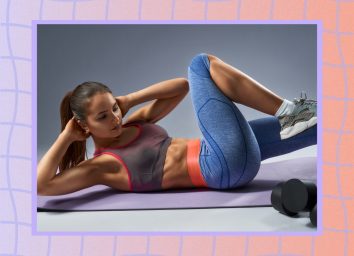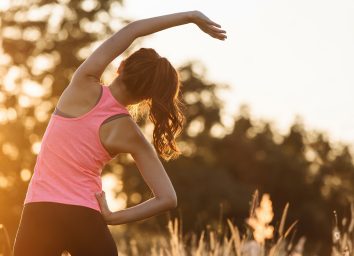Over 50? Never Do These Exercises, Say Top Experts
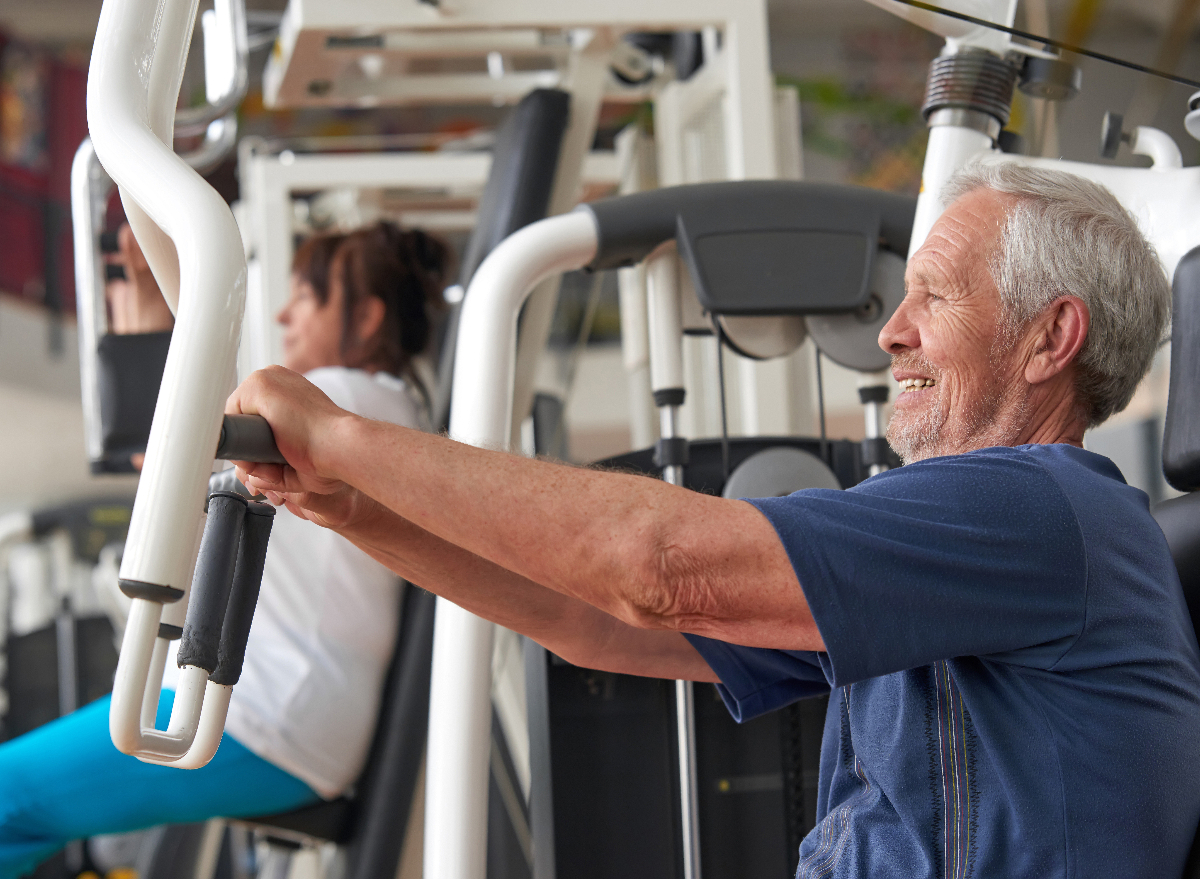
Let's get this out of the way first: It's certainly within the realm of possibility that you're over 50 years-old, you're super fit and active, and you're supremely capable of doing all of the exercises on this list. After all, in the case of fitness, there is no one-size-fits-all list of no-nos that literally everyone on the planet should avoid. "Personally, I am of the belief that there is no such thing as bad exercises, only poor execution, and poor programming," says Jake Harcoff, MS, CSCS, TSAC-f, CISSN, a certified kinesiologist based in Canada.
He's right, of course, and if you seek out quality personal training—and you work hard—there's a good chance that no exercise is off-limits for you.
That being said, if you're the average person who is over 50—someone for whom optimal fitness isn't necessarily his or her top priority in life, and who may struggle at times to get to the gym—top personal trainers and doctors will definitely tell you that there are certain types of exercise and even certain specific exercise moves that you should avoid.
Why? If you have high blood pressure, for instance, you'll be surprised to learn that some exercises can make matters worse. Also, given the stiffness that occurs in your joints over time—combined with the inexorable loss of muscle mass that happens to all of us—some exercises will raise your risk of injury.
What follow are the exercises that you should think twice before performing if you're over 50—or, in many cases, you should avoid altogether. And for some exercises you should definitely do, don't miss The Secret Exercise Tricks for Getting a Lean Body After 50, According to Experts.
Shoulder Presses
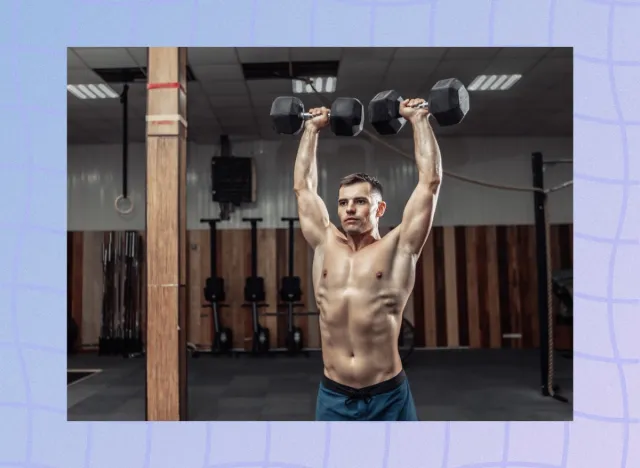
"Over the course of 50 years, most of us develop some poor movement patterns, which have caused us some muscle imbalances and joint problems," says Allan Misner, a NASM-certified personal trainer, FAI-certified functional aging specialist, proprietor of the gym Island Fitness, and the host of the popular 40+ Fitness Podcast. "Any exercise that stresses these joints can be a cause or concern."
One of most common issues Misner sees among his clients is shoulder impingement, which is when the tendons in your shoulder rub against the bone. "The muscles that make up the rotator cuff are caught between the acromion and humorus, which cause inflammation and pain. In some cases, the impingement can get bad enough that the muscle tears (torn rotator cuff). I have firsthand experience with this as do many people over the age of 50."
According to Misner, common culprits that exacerbate shoulder impingement include shoulder presses, upright rows, and "getting under a bar or dumbbells for overhead presses."
"I encourage my clients to be very careful on shoulder press machines to ensure the movement patter is not stressing the shoulder joint," he says. "Make sure the seat is adjusted properly so the movement is smooth and you're not working outside your primary range of motion." And for some exercises you should definitely do, don't miss the Secrets for Walking Your Way to a Longer Life, Say Experts.
Leg Extensions
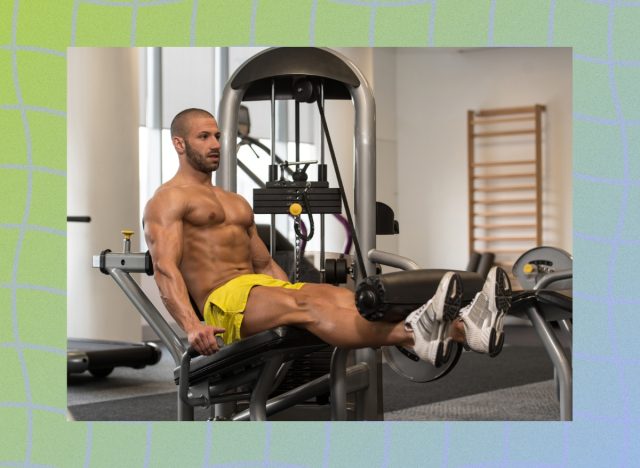
"This weight-training machine is great for building strength in your quadriceps and even your glutes," says Ashlee Van Buskirk, a former competitive bodybuilder and owner and operator of the Denver-based fitness and nutrition coaching business Whole Intent. "Unfortunately, this machine places a lot of stress on your kneecaps, which are often a weak point for people over 50. If you've had knee problems in the past or suffer from chronic inflammation, then steer clear of the leg extension machine." For more on leg extensions, check out the Popular Workouts That Can Wreck Your Body, Say Experts.
Burpees
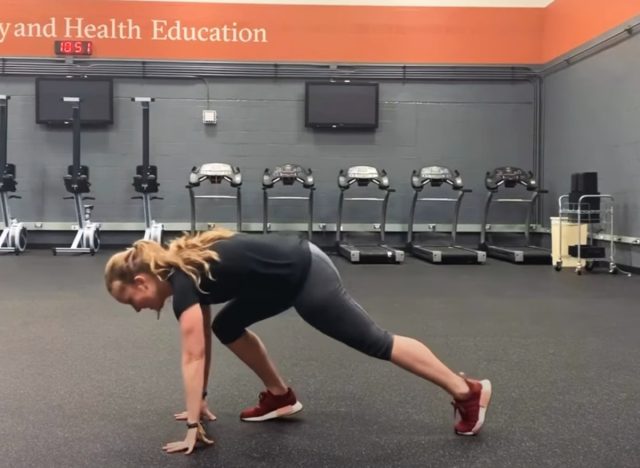
"Burpees can be a great full-body exercise to get the heart rate up in your workout, however, the exercise can give a bit of wear and tear on your knees," says Caley Crawford, NASM-CPT and Director of Education for Row House. "The wear and tear on your knees is typically cause by the downward 'crouching' motion before you pop your legs back behind you. If a burpee is done correctly, finding the bottom of a good squat before placing your hands on the ground, it's much softer on your body. The issue lies with many people lacking the mobility to place their hands on the ground from their squat, so what ends up happening is their knees go past their ankles, heels lift up, causing excessive compression and stress on the knees. To add to it, this exercise is often done fast, which does not help it's cause."
She advises you to find an alternate exercise that equally works your heart without the wear-and-tear. "Rowing would be a perfect replacement for a burpee as it would spike your heart rate just as fast (if not faster depending on how hard you're choosing to work)," she says. "If you wanted to maintain the upper body work, my suggestion would be to pair rowing with push-ups. You'd get even more full body strength than you would with burpees, plus the cardio burst you're looking for without the pressure and over compression of the knee."
Marathon Running
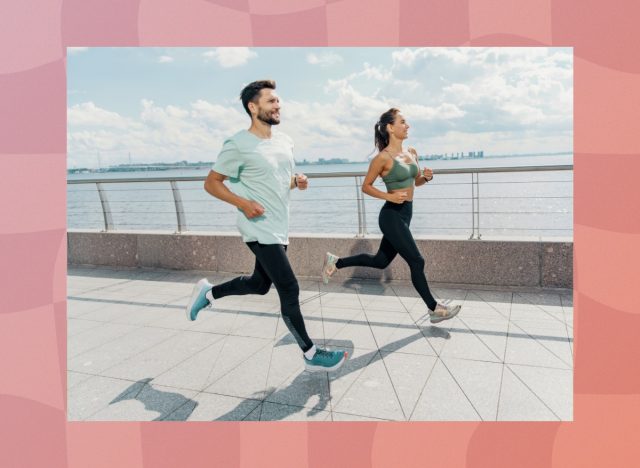
"Over 50, you shouldn't be marathon running, doing long-cardio workouts," says Mindy Pelz, DC, and author of The Reset Factor: 45 Days to Transforming Your Health by Repairing Your Gut. "These types of exercises are more damaging to your cardiovascular system than not exercising at all."
Like many experts, Pelz recommends you shift from more cardio-based exercise into more resistance training after 50. "Muscles are your longevity organ and you have to fight for muscle a lot more as you age. When people are doing cardio, they are creating more strain and stress on their cardiovascular system. They need to make sure that they are putting in more weight training, specifically resistant training such as TRX or resistance bands. You want to build functional muscle, and when you do this you are improving cardiovascular health, you are speeding up your metabolism, and you are improving your posture."
Box Jumps
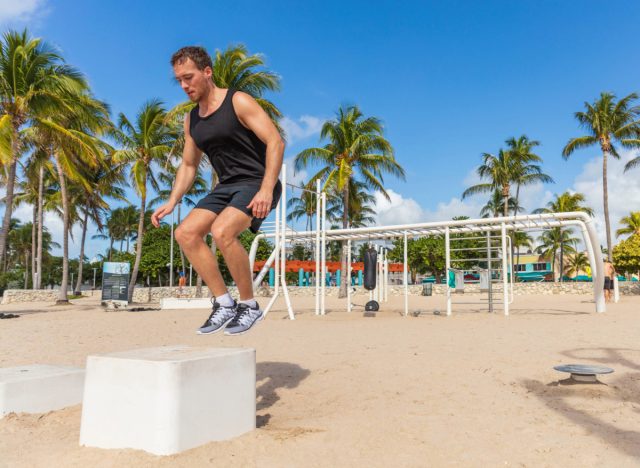
"Box jumps can be great for improving your explosive power, however, there are a few things to caution as you get older," says Crawford. "There's the box itself. If it's a wooden box, you're likely to end up with bloody shins eventually. Even the strongest athletes slip up sometimes when they're tired and catch a toe, causing you to slam your shins into the box. And I'll tell you… from experience… the scar will likely be with you forever."
Also, there's how you land on the box. "Whether it's a hard or soft box, the way your foot strikes and lands is important. The goal is to land as soft as possible on your full foot in a squat position, however, what you see happening is people barely making it and landing more on their toes, knees caving in and knees shooting forward past their ankles."
Finally, there's how you come down from the box. "Too often, people try to speed up their reps by rebounding off and back onto the box which is a lot of pressure on your ankles, knees, calves, shins. Unless you're training for a professional sport and this is specific to your training program, my suggestion would be to avoid box jumps entirely."
Crunches and V-Ups

"Many older people struggle with lower back pain," explains Diana Gariglio-Clelland, RD, a registered dietitian for Next Luxury. "When you have a weak core, your back takes over and becomes more tight. Sitting for prolonged periods of time also tightens the hip flexors. Exercises such as crunches and V-sit ups can put more strain on your lower back and hip flexors versus actually strengthening your abs. While these exercises can be useful when your core is already strong, it's best to avoid them if you're working to build your core muscles."
Not only are sit-ups bad for your neck, but they're also one of the least-effective abdominal exercises you can do, according to an old study at San Diego State University.
Lifting Really Heavy Weights
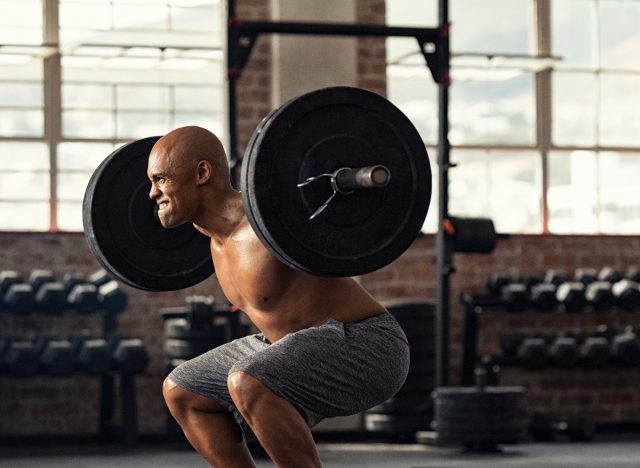
"While weight-training is one of the best ways to build muscle mass fast, it also comes with some inherent risk," says Van Buskirk. "That extra weight can place significant stress on your whole body, including your cardiovascular system. If you have high blood pressure (>180/110 mmHg), then make sure you speak with your doctor before doing any weightlifting."
Really Intense Levels of Cardio
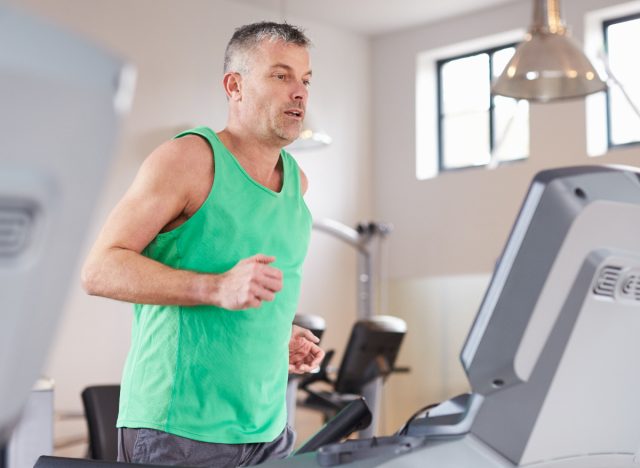
"We do lots of work with women who are going through perimenopause and beyond," explains Mahri Relin, an AFPA Pre and Postnatal Exercise Specialist, a Postnatal Corrective Exercise Specialist, a NASM-Certified Personal Trainer, a NASM Corrective Exercise Specialist, and the founder and creator of Body Conceptions. "In this period of life, it's not the best idea to engage in high levels of cardio."
She explains further: "Extra-intense cardio can increase cortisol levels significantly, which affects your sleep and can contribute to greater hormone imbalance and cause adrenal fatigue. High cortisol levels can also lead to increased inflammation and increased fat around the abdominal and diaphragmatic areas, which can increase your risk for heart disease and contribute to metabolic syndrome."
Additionally, she says, "high cortisol levels decrease progesterone levels, which already decline during perimenopause. Progesterone is normally a key player in maintaining calm, happiness, and clarity. Women in perimenopause who exercise too intensely and raise cortisol levels that might already be high due to stress are in danger of experiencing greater anxiety, depression, and mood swings in addition to increases in fat stores."
Running On Hard Surfaces
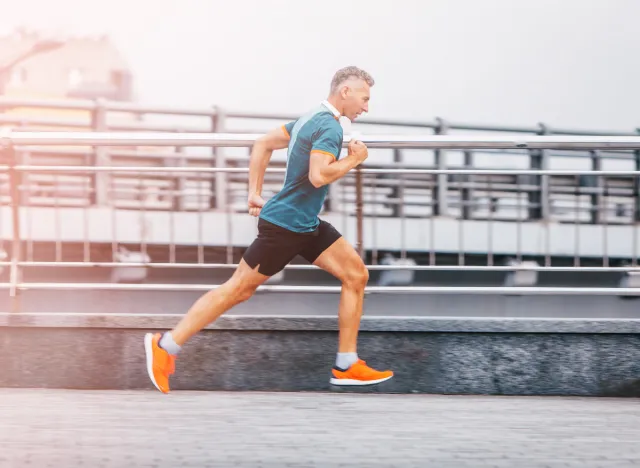
"If you're not already a conditioned runner, you're better off to do your runs on a softer surface such as on a dirt trail," says Gariglio-Clelland. "Repeated concussion on the joints on hard surfaces can lead to joint pain, whereas softer surfaces are more forgiving." And for more exercise advice, don't miss The Single Best Exercise You Can Do for a Lean Body, Say Experts.

